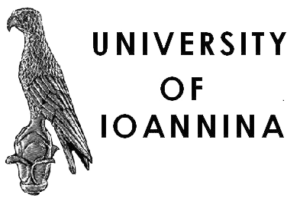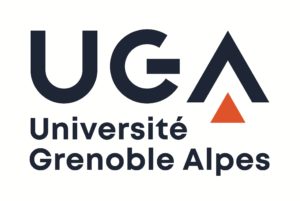
IBEC
INSTITUTE FOR BIOENGINEERING OF CATALONIA (IBEC), Spain
Carrer BALDIRI REIXAC 10-12, 08028 Barcelona
Department carrying out the project:
Biomaterials for regenerative therapies group
Carrer BALDIRI REIXAC 15-21, 08028 Barcelona
Person in charge of the project:
Elisabeth Engel · Group leader Biomaterials for regenerative therapies group
eengel@ibecbarcelona.eu
Other personnel participating in the project:
Dr. Oscar Castaño, senior Researcher
Dr. Soledad Pérez, senior Researcher
Dr. Eduard Torrents, senior Group Leader
Celia Ximenes (PhD student)
Other contact persons:
Sara Vicente · svicenteo@ibecbarcelona.eu
Esther Gallardo · projects@ibecbarcelona.eu
The Institute for Bioengineering of Catalonia (IBEC) is a research institute covering most bioengineering fields, from basic research to medical applications, aiming to act as an international reference in this field. IBEC is located at the Barcelona Science Park (PCB) sharing also facilities with the Bellvitge University Hospital (BUH). IBEC hosts around 200 researchers and technicians, which are part of its own staff or are associated to the University of Barcelona and Technical University of Catalonia or coming from different recruitment programs of research staff (e.g. ICREA and others). Within IBEC, the “Biomaterials for regenerative therapies” group, headed by Dr. Elisabeth Engel is multidisciplinary research group focussing its research activities on the development and application of new biomaterials that will stimulate cell colonisation and differentiation to promote tissue repair and regeneration. The areas of application are skin, nervous tissue, bone, tendons and vascularisation.
Dr. Elisabeth Engel completed her doctorate in 2003, at the IMIMHospital del Mar Research Institute in the field of Medicine. During her postdoctoral stage in the BarcelonaTECH (UPC) (since 2002) she set up the biology lab for tissue engineering and regenerative medicine. In 2007 she became Lecturer of the UPC, in the group of Dr. Josep A. Planell, where she worked as a senior researcher in the development and evaluation of new biomaterials to promote angiogenesis, and in 2010 she became associate professor. On May of 2012 she became Junior Group Leader of the Biomaterials for regenerative therapies group at the Institute for Bioengineering of Catalonia (IBEC) to further promote to Senior Group Leader in 2016. Currently, this dual linkage to UPC and IBEC (defined in the framework of a cooperation agreement) allows her to perform both research and education/training activities. As a research output, she has published 95 SCI‐indexed journal papers and has an h‐index of 25, 1933 citations (Scopus), and has supervised 9 PhD thesis.
UNIV. OF IOANNINA

UNIVERSITY OF IOANNINA, Greece
TEI OF EPIRUS, Kostakioi, 47132 Arta
Department carrying out the project:
Laboratory of Biophysics, Biochemistry, Bioprocessing and Bioproducts
Person in charge of the project:
Dimitrios Zeugolis · Professor
dimitrios.zeugolis@nuigalway.ie
Other personnel participating in the project:
Ioannis Skoufos, Professor · jskoufos@uoi.gr
Athina Tzora, Professor, Head of the laboratory
Anastasios Tsinas, Rector of the Institution
Eyaggelia Nasi, Head of the Research office
Dimitrios Maretas, Technology Transfer office
Georgios Magklaras, Research fellow-faculty
Konstantina Fotou, Research fellow-faculty
The research strategy followed by the University of Ioannina is consistent with the research objectives of its Departments and the relevant Senate decisions. Its purpose is to help strengthen and upgrade scientific and technical research at University level, and contribute to the development of a unified European Research Area.
Dr Dimitrios Zeugolis is lecturer in Biomedical Engineering (Biomaterials) at NUI Galway and since 2013, he is visiting Professor at TEI of Epirus, Greece. In 2015, he established the REMODEL and he is also Principal Investigator at the SFI CÚRAM at NUI Galway. Dimitrios is President of MBI; member of the EU Council of TERMIS; member of the Basic Science Education Committee of ORS; treasurer of the HSB; member of the Board of Delegates of E‐MRS; and member of Pool of Expert Board of BBSRC. His research group (a) uses bottom up and to‐down approaches to build nano‐textured constructs that closely imitate the properties of native extracellular matrix assemblies; (b) utilises recent advancements in scaffold functionalisation, through incorporation of biophysical cues, biological beacons and biochemical signals, to provide therapeutic interventions for the treatment of soft and hard tissue injuries; and (c) investigates how modulation of the in vitro microenvironment will facilitate either permanently differentiated cell phenotype preservation or stem cell lineage commitment and enable wide acceptance and clinical translation of cell‐based therapies. Dimitrios has authored >70 peer‐reviewed articles, >350 peer‐reviewed conference publications, 12 peer‐reviewed book chapters. He has been on the editorial board of 15 journals and acts as reviewer for >100 journals and >30 funding agencies.
Since 2008, he has been awarded >€15 million as Principal Investigator from national (e.g. Science Foundation Ireland, Health Research Board, Irish Research Council, Enterprise Ireland, Teagasc) and international (e.g. FP7, H2020) funding agencies and direct industry contribution (e.g. Medtronic, Stem Cell Technologies, Viscus Biologics). Dimitrios will chair the EORS Meeting in 2018 at Galway Ireland and the TERMIS EU Chapter Meeting in 2019 in Rhodes, Greece.
Dimitrios co‐founded Vornia Biomaterials Ltd in 2009, which was sold in 2014. He is due to spin out a new company in the wound healing space.
HUVH

HOSPITAL UNIVERSITARIO VALL D’HEBRON (HUVH), Spain
Passeig VALL D’HEBRON 119-129, 08035 Barcelona
Department carrying out the project:
Department of Plastic Surgery and Burns
Person in charge of the project:
Joan Pere Barret · Head of the Plastic Surgery department
jpbarret@vhebron.net
Other personnel participating in the project:
Jordi Serracanta, MD
Elena Arana, MD
Jordi Aguilera, MD
Mireia Ruiz, MD
Hospital Universitari Vall d’Hebron (HUVH) is one of the largest hospital complexes in Spain and is a reference site for several highly complex tertiary procedures. It has nearly 9,000 professionals employed and more than 1,100 beds, covering a reference population of 400,000 inhabitants. Catchment population for burns and other complex injuries is 8 million people. The hospital includes all medical and surgical specialties, clinical support units, laboratories, teaching and research areas (including Vall d’Hebron Research Institute; VHIR).
The Department of Plastic Surgery and Burns of HUVH is a national reference by the techniques, innovative treatments and care they apply to their patients. It is a comprehensive centre that treats both children and adults. It admits around 550 patients/year, with a Burns ER (2,500 emergencies/year) and Burns Day Care Unit (2,200 episodes/year). Their patient area is designed not only to promote recovery, but also to minimize the chances of infections and facilitate later retrieval. The Department is specialized in diseases that need treatment by use of plasties and grafts from tissue flaps or with biomaterials. It is fully equipped with clinical equipment for advanced medical therapies, like Wound‐healing and microsurgery, and validations of new applications. This unit of reference also establishes national protocols and recommendations that are followed in Europe The Centre trains both graduate and postgraduate students and trainers. The centre performs approximately 2,200 operations per year that include the whole spectrum of Plastic Surgery. It also plays an integral role in research with ongoing projects in burn resuscitation, clinical stem cell application, scar modulation, allotransplantation, and telemedicine. It has been recognised by AGAUR as Research Group (Vall d’Hebron Initiative for Regenerative Medicine). VHIR holds all the structure to support HUVH researchers with all the administrative activities related to the implementation of their projects.
Dr. Joan Pere Barret holds a Degree in Medicine from U. of Barcelona, and a PhD from U. of Groningen (the Netherlands). He got the ECFMG Diploma (Philadelphia, 1996), and enjoyed a Burn and Plastic Surgery Fellowship to obtain an MSc in Clinical Investigation in the U. of Texas (1997‐1999). Currently, he is the Head of Department of Plastic Surgery and Burns, Director of the Burn Centre and of the Face and Hand Allotransplantation Program (HUVH). He is also Associate editor of BURNS and International Journal of Surgery (Elsevier) and President of the European Burns Association and Secretary General in the Euro‐Mediterranean Burn Council. Dr Barret is also Associate Professor of Surgery at UAB and Full Professor by AQU.
UGA

UNIVERSITÉ GRENOBLE ALPES (UGA), France
Service Courrier Université Grenoble Alpes (UGA), Pôle Phitem CS 40 700, 38058 Grenoble, CEDEX 9
Department carrying out the project:
LIPhy (Lab for Interdisciplinary Physics)
Person in charge of the project:
Olivier Stephan · Researcher
olivier.stephan@univ‐grenoble‐alpes.fr
Other personnel participating in the project:
Laetitia Gredy, senior Technician
Laboratoire Interdisciplinaire de Physique (laboratory is a joint CNRS‐ Université Grenoble Alpes structure. In June 2007 the laboratory celebrated its 40 years of multidisciplinarity. It keeps from its origins an important skill to optical methods and instrumentation. At the same time it has also strongly developed theoretical and experimental studies of “complex systems” such as non‐Newtonian fluids, biological or biomimetic objects. Olivier Stéphan, become HDR on 2002, on 1995 obtained his PhD on Paris VI University (Pierre et Marie Curie), in Analytical Chemistry under the leadership of C. Poitrenaud (Laboratoire des Enseignements de Chimie et du Cycle du Combustible), CEA Saclay, France.
Since 1997, he is assistant‐ professor at Grenoble Alpes University. Olivier Stephan has been associated for about 15 years with physicists and chemists on collaborative researches focusing on organic based conjugated materials. Since more than 10 years he is involved in research activities using twophoton absorption (imaging, optical limitation, two‐photon micro/nano laser fabrication). He is the author or co‐author of about 60 articles in peer review journals.
MICROLIGHT3D
![]()
MICROLIGHT3D SAS (ML3D), France
5 avenue du Grand Sablon, 38700 La Tronche
Person in charge of the project:
Denis Barbier · President
denis.barbier@microlight.fr
Other personnel participating in the project:
Michel Bouriau, chief Technical Officer
Philippe Paliard, application Engineer
Gabriel González, software Engineer
Positioned in the microtechnology sector for cellular biology applications, Microlight3D aims to develop micro 3D‐printing system and process for making 3D objects with volume ranging from 1μm3 to 1cm3. The technology used here, the ‘two‐photon‐polymerization’, enables us to manufacture complex objects with unmatched resolutions of 1μm or better. The system makes no limit to the complexity of the object shape, and is perfectly adapted to the complexity of the living tissue.
Denis Barbier, CEO of Microlight3D, obtained his engineering degree in Electrical Engineering National School of Grenoble in 1986, and its MSc degree in Optics and Optoelectronics from INPG (National Polytechnic Institute of Grenoble) in 1987. Received its PhD in 1989 on “Magnetostrictive fibre optic sensor” from INPG. He did a Post‐Doctoral period at Imperial College/London on new integrated optics technology, based on electron beam irradiation of glasses (1989‐90). Moreover, he joined the R&D consortium GeeO/France in 1990, where he became head of lasers and amplifiers programs, and develop a new process to manufacture glass integrated optical amplifiers, and received an “Engineering Excellence Award” from the Optical Society of America (OSA) for this work in 1999. In 1998 he co‐founded the company called Teem Photonics, and was appointed Executive Vice President and CTO. He actively participates to a number of European research programs, in the field of telecommunications, lasers, optical components, and material science. In 2016 he co‐funded microlight3D, a company dedicated to 3D direct‐laser‐writing technologies.
